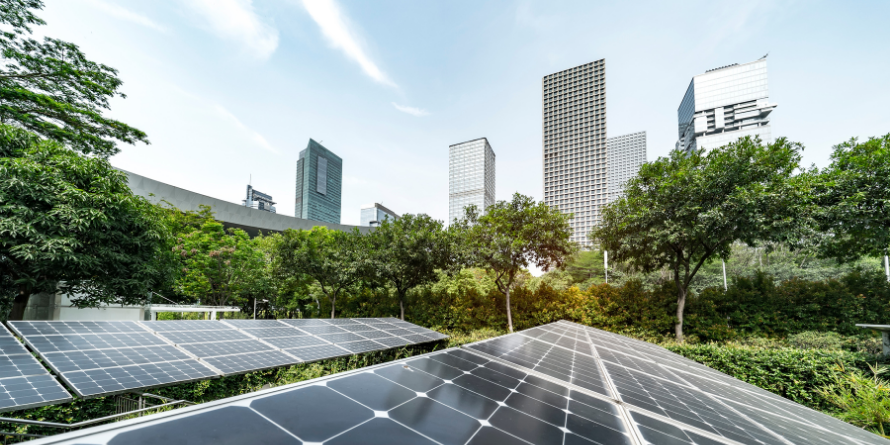Posted on: 06/07/2023
A few weeks ago, the summer solstice marked the longest day and shortest night of the year which gives us an opportunity to highlight the power of solar energy. Solar energy plays a crucial role in helping the UK achieve its renewable obligations and climate targets. By expanding solar energy capacity, the UK can diversify its renewable energy mix, decreasing dependency on traditional energy sources.
Solar energy in the UK has experienced remarkable growth in recent years. In 2021, the country witnessed the installation of a staggering 13.63 GWe solar capacity. Moreover, a 400% increase in commercial inquiries for UK solar power in 2022, showcasing the growing interest and demand for solar energy in various sectors. By the end of 2021, the UK boasted an impressive 1,133,645 solar photovoltaic sites, underlining the nation's commitment to embracing renewable energy and driving sustainable change.
With the increasing importance of solar energy in the UK’s transition towards net zero, we were pleased to begin working with all 33 Cambridge Colleges from October 2021 whose ambition was to find a local renewable energy source. Using our Renewable Specific product, they are now powering their facilities primarily with energy sourced from two local solar farms located within a 30-mile radius. To learn more about our partnership and how we support Cambridge Colleges in their sustainable commitment, see our solar farm visit.
Despite reducing our carbon footprint and helping us achieve our climate targets there are multiple other benefits of solar energy. The initial results of a national survey examining wildlife on solar farms reveal that these installations provide habitats for numerous declining species, particularly on sites managed specifically for conservation purposes. Additionally, the presence of insects around ground-mounted photovoltaic panels can potentially benefit neighbouring agriculture by bolstering the population of pollinators.
Even though the UK has made significant progress in the development and adoption of solar energy in recent years it still faces a number of challenges. It has been reported that a lack of affordable loans and insufficient battery storage options have been highlighted by MPs as significant barriers that delay the UK in unfolding its full solar energy potential and reaching the government’s ambition of 70GW solar generating capacity by 2035. Urgent attention and investment are required to modernise and upgrade the power network in order for the UK to overcome this obstacle. Innovation remains crucial to enhance the efficiency, storage capabilities, and integration of solar power into the energy grid. Securing adequate funding means that research and development efforts can lead to breakthroughs in solar technologies. Last year at SmartestEnergy’s Net Zero Week Festival, we invited key experts in the industry to speak on our ‘Financing the Net Zero transition’ panel to discuss whether the UK’s financial environment is ready to deliver on its renewable generation commitments. You can watch the full panel here.
The Government has committed to the UK achieving net zero by 2050. With a current solar capacity of 14 GW, to meet its target, analysis indicates that the UK must aim to install a minimum of 40 GW of solar generation capacity by 2030. Solar energy is considered as one of the most appealing choices, thanks to its declining average installation costs. It is expected to play an increasingly vital role in the UK’s energy mix, with estimations suggesting that it could contribute up to 20% of the UK's total electricity generation by 2030. Following this plan, the UK could witness a substantial annual reduction of 21.2 million tonnes in carbon emissions.

 United States
United States Australia
Australia






